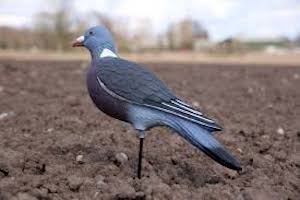**************************
Riparian Restoration and Avian Ecology Research in the Mojave Desert
Summer 2008 Internships
We want to determine the availability of applicants for field internships
for a regional wetlands and riparian habitat restoration project spanning
southern Nevada and portions of three adjacent states. We are researching
the success of past habitat restoration efforts and conducting new
restoration in Mojave Desert oasis and riparian habitats, including
vegetation inventory, avian and insect communities, GIS, invasive species
control, prescribed fire, simulated biocontrol, and native plantings. The
overall focus is vegetation and avian community inventory and research to
develop more effective control of saltcedar/tamarisk (Tamarix spp.) and
other secondary plant invaders. The research sites are widely scattered
across the Mojave Desert region, with the base of field operations in the
Las Vegas (NV) area.
DUTIES: Habitat inventory and research tasks emphasize plant and avian
ecology, and field and office GPS/GIS applications. For field
reconnaissance, interns will use field (backpack) GPS/GIS technology,
including a sub-meter Trimble Pathfinder ProXT GPS unit, handheld
computer, Windows Mobile 5, and ArcPad GIS software.
EDUCATION/EXPERIENCE/SKILLS: College undergraduates, recent graduates, and
others, are encouraged to reply as to their availability for summer
internships. A working knowledge and demonstrated experience in plant and
wildlife ecology, soil chemistry and/or GIS (ArcView GIS 3.3 and/or ArcGIS
9.2) are desirable. Successful candidates will be expected to be
conscientious self-starters capable of independent work and timely project
completion.
CONDITIONS: Potential applicants should be capable of vigorous physical
activity (e.g., working long hours outdoors in hot, cold, rainy, and buggy
weather; able to hike with a 40-pound pack across uneven terrain). The
normal work week will consist of five eight-hour days, though working
longer
days and weekends may be necessary.
Internship positions are expected to start in May 2008 on either a
seasonal or continuing basis, depending on applicant availability. Interns
will be provided liability protection, lodging, field transportation, and
an hourly wage of $9-$16, depending on experience. Health insurance and
other benefits
are not included.
PROJECT INVESTIGATORS: Interns will work with several project
investigators, including:
Tom Dudley, Ph.D., Marine Science Inst., UCSB
Tom Hayes, Ph.D., Research Manager, UCSB
Matt Brooks, Ph.D., U.S.G.S., Fresno and Henderson, NV
APPLICATIONS: Please respond immediately, since internships are expected
to start in May 2008. However, additional intern openings will be
available throughout the 2.5-year project.
Respond to:
Tom Dudley
tdudley@msi.ucsb.edu
Marine Science Institute
University of California
Santa Barbara, CA, USA 93106-6150
&
Natural Resource & Environmental Sciences
University of Nevada, Reno
Office: Noble Hall 1128; Lab: Noble 1250
http://rivrlab.msi.ucsb.edu/
 And in further buffalo related news you might have seen this news story out yesterday. Apparently a harsh Yellowstone winter has led to the starvation of more than 700 buffalo. In addition more than 1,600 were shot by hunters according to National Park Service figures.
And in further buffalo related news you might have seen this news story out yesterday. Apparently a harsh Yellowstone winter has led to the starvation of more than 700 buffalo. In addition more than 1,600 were shot by hunters according to National Park Service figures.
































